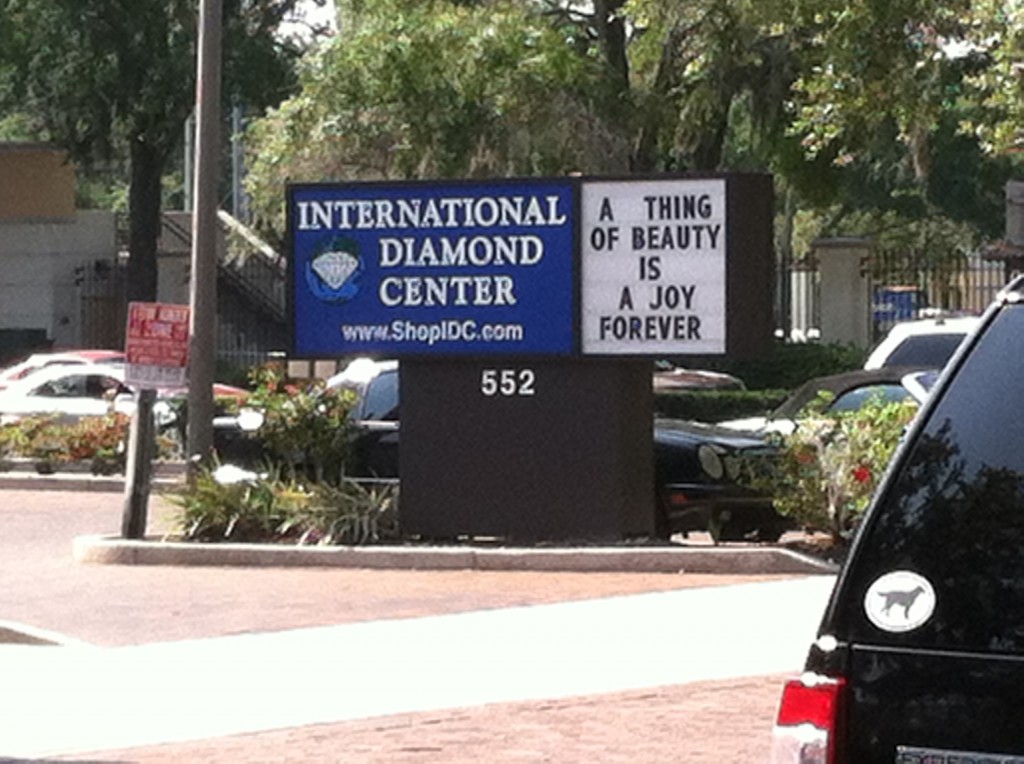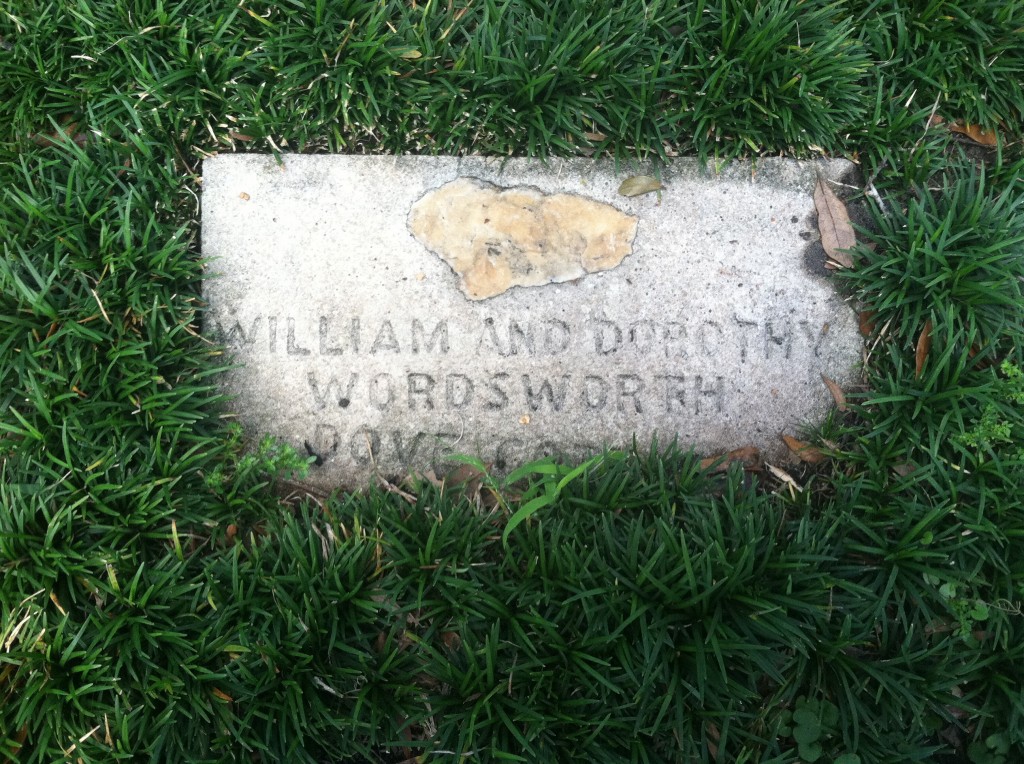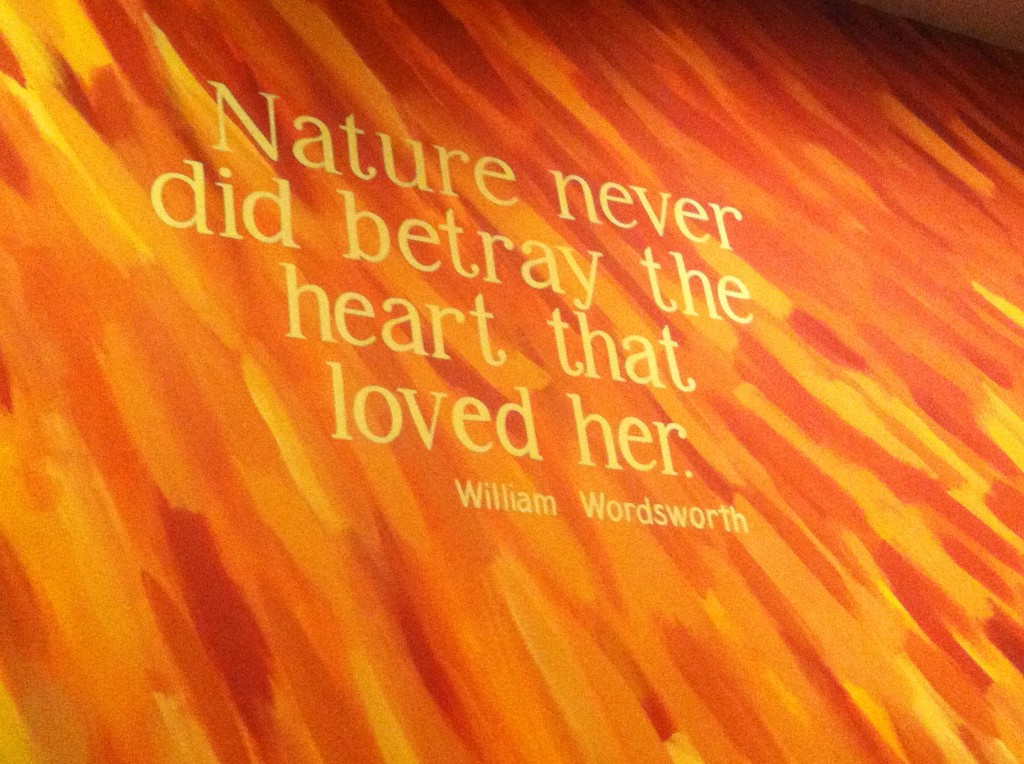Romantics in Winter Park, FL
What do a jeweler’s shop, a southern liberal arts college, and Disney World have in common? English Romantic poets, of course.
The 19th century was a long time ago, England is far away, and poetry isn’t as popular as Youtube. Teaching the Romantic poets — or just about any author or artist who doesn’t publish on Facebook — means selling students on the importance of literature from the past. One way to do so is to find references in the local environs, and here are a few examples I show students early in the semester.
There’s an International Diamond Center about a block from my office: I can just barely see the sign from my window, through the soccer field’s slotted fence. Normally, I wouldn’t even register the existence of such a shop (I’m not currently in the market for diamonds). But their billboard caught my eye:
I took that picture over the summer, having just taught a Romanticism course. Seasoned Romanticists will recognize the first line of Keats’s Endymion, its iambic pentameter here squashed into a tight space.
Even closer to my office, the Rollins College Walk of Fame runs through the center of campus. Stones collected from all over the world honor various famous persons, and each stone is taken from a location associated with the person. A student pointed this one out to me last fall:
The stone — taken from Dove Cottage, where William and his sister lived, if you can’t read the part obscured by the grass — is right outside the building where I teach most of my classes. I had walked past it dozens of times, and never noticed it. In fact, I didn’t even know about the Walk of Fame: my fiancee, who works for the alumni association, had to explain it to me. Now that I know a piece of the Wordsworths’ home is here, though, I make sure to bring my classes out to see it.
Romantic references pop up a bit farther from campus, too. Disney World is just down the freeway from the college, and the wall outside Epcot’s Living with the Land attraction presents riders with a wall of quotations, among which this one is prominent:
That’s “Tintern Abbey,” of course, and Wordsworth is pulled into the attraction’s environmentalist theme.
As these images show, the Romantic poets are still with us, sometimes in unlikely places. Do you have favorite contemporary images of authors or artists you teach regularly? Tell me about them!


